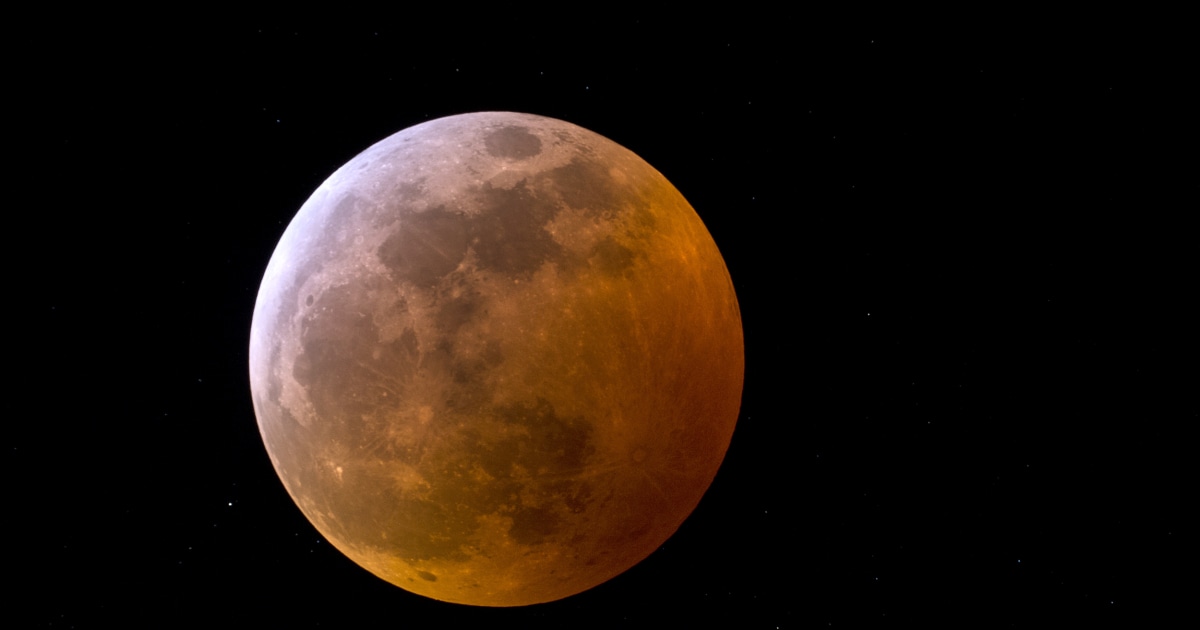
Get the Mach newsletter.
By Denise Chow
Get ready, skywatchers. The last supermoon of 2019 will be visible in the night sky Wednesday, coinciding with the spring equinox that heralds the start of a new season.
The March 20 spectacle will be the final of this year’s three back-to-back supermoons. The first was on Jan. 21, and the second — the biggest and brightest supermoon of 2019 — was on Feb. 19.
A supermoon is a full moon that has reached the closest point to Earth in its monthly elliptical orbit around the planet. As such, supermoons appear larger and brighter in the night sky, though these changes are typically far too subtle to detect.
Full moons can be observed with the naked eye and don’t require any special equipment. But, for skywatchers who are thwarted by clouds or bad weather, the Virtual Telescope Project, which remotely operates several telescopes in Italy, will livestream the skywatching event online. The broadcast, which will show the supermoon rising over Rome, will begin at 12:45 p.m. ET (16:45 UTC) on Wednesday.
The moon will reach its closest point to Earth — what’s known as lunar perigee — on Tuesday at 3:47 p.m. ET, but the moon won’t be completely full until Wednesday at 9:43 p.m. ET. The moon is usually about 240,000 miles away from Earth, but at perigee this month, it will come within about 223,300 miles of our planet, according to NASA.
The equinox will arrive at 5:58 p.m. ET on Wednesday, less than four hours before the full supermoon. In the Northern Hemisphere, the equinox is the official start of spring, but in the Southern Hemisphere, it marks the beginning of autumn.
March’s full moon is sometimes called the “worm moon,” because according to folklore tradition, it occurs at a time when the frosty ground is melting and earthworms start to emerge.
Want more stories about the moon?
SIGN UP FOR THE MACH NEWSLETTER AND FOLLOW NBC NEWS MACH ON TWITTER, FACEBOOK, AND INSTAGRAM.
https://www.nbcnews.com/mach/science/how-see-super-worm-equinox-moon-last-supermoon-2019-ncna984861
2019-03-19 20:45:00Z
52780241749142
Bagikan Berita Ini














0 Response to "How to see the 'super worm equinox moon,' the last supermoon of 2019 - NBC News"
Post a Comment